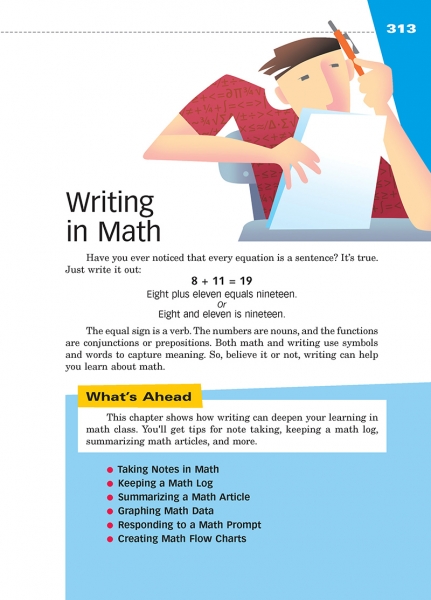Page 313 from

Start-Up Activity
Ask your students to guess what the original root of the word "mathematics" is. Let them offer all kinds of suggestions, and write them on the board. Then share with them that the word comes from the ancient Greek verb manthanein, which simply means "learn." At its root, mathematics is a system for learning.
Of course we think that mathematical learning mostly involves numbers, but it also involves many words, spoken and written. Numbers and words work together to help us learn.
This chapter shows students many ways that writing can help them learn mathematics.
Also direct students to the "Mathematics" section of the Almanac (pages 568–574).
Think About It
“Math is sometimes called the science of patterns.”
—Ronald Graham

Start-Up Activity
Ask your students to guess what the original root of the word "mathematics" is. Let them offer all kinds of suggestions, and write them on the board. Then share with them that the word comes from the ancient Greek verb manthanein, which simply means "learn." At its root, mathematics is a system for learning.
Of course we think that mathematical learning mostly involves numbers, but it also involves many words, spoken and written. Numbers and words work together to help us learn.
This chapter shows students many ways that writing can help them learn mathematics.
Also direct students to the "Mathematics" section of the Almanac (pages 568–574).
Think About It
“Math is sometimes called the science of patterns.”
—Ronald Graham
